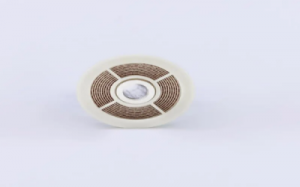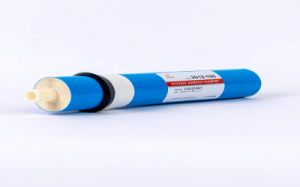RO membranes are widely used in water treatment systems in commercial and domestic settings. Although the basic principles are the same, there are significant differences between commercial Ro membranes and domestic Ro membranes. This article explores these changes and their impacts to help consumers and industry professionals make informed decisions about selecting the Ro membrane that suits their specific needs.
Commercial Ro membrane: Commercial Ro membranes are designed to treat large volumes of water on a continuous basis. They are designed to withstand heavy use and effectively remove a wide range of contaminants, including minerals, salts and impurities. Commercial ro membranes typically have larger surface areas and higher flow rates to provide efficient water treatment for applications such as restaurants, hotels, industrial facilities and large water purification plants.

Domestic RO membrane: Domestic ro membranes, also known as residential reverse osmosis membranes, are designed to treat the smaller volumes of water typically found in homes. These membranes are optimized for performance in low-flow applications such as under-sink systems, countertop filters, or whole-house water purifiers. Domestic ro membranes prioritize water quality, ensuring contaminants are removed while essential minerals are retained, providing families with safe and clean drinking water.

Main differences: The main differences between commercial and domestic ro membranes are their size, flow rate, and intended use. Commercial ro membranes are designed for large-volume water treatment and can operate continuously for long periods of time. They are designed to withstand rigorous use and demand, making them ideal for commercial and industrial applications. Domestic Ro membranes, on the other hand, are compact and designed for low-flow environments, prioritizing excellent water quality for residential use.
Choose the right membrane: The choice of commercial and domestic Ro membranes depends on the specific requirements of the application. Commercial environments with high and constant water usage should choose commercial reverse osmosis membranes to ensure efficient and reliable water treatment. In the meantime, families seeking clean and safe drinking water can rely on domestic RO membranes, which prioritize water quality and are designed for low-flow residential use.
In conclusion, when choosing the right water treatment solution, it is crucial to understand the differences between commercial and domestic RO membranes. Commercial Ro membranes are designed for heavy use and high flow rates, making them suitable for industrial and large-scale applications. Domestic RO membranes, on the other hand, prioritize residential water quality, providing clean drinking water while retaining essential minerals. By considering usage patterns, capacity requirements and water quality goals, consumers and industry professionals can make informed decisions to ensure optimal performance and efficacy of their water treatment systems.
Our products include ultra-high pressure reverse osmosis membrane and energy-saving reverse osmosis membrane, salt lake lithium extraction nanofiltration membrane and a series of innovative membrane products. Our products includes various models of commercial and domestic Ro membranes, if you are trusred in our company and interested in our products, you can contact us.
Post time: Sep-15-2023
